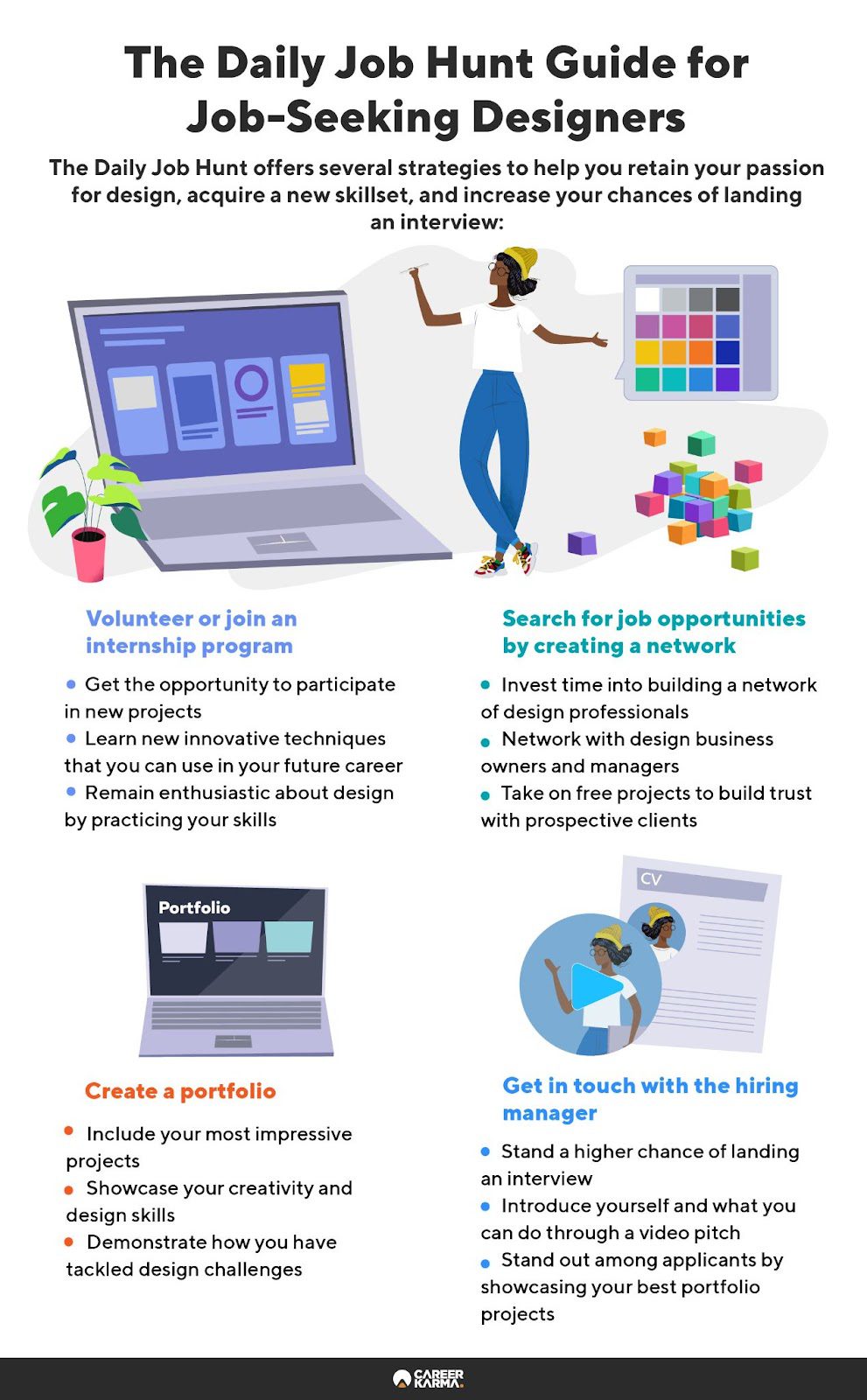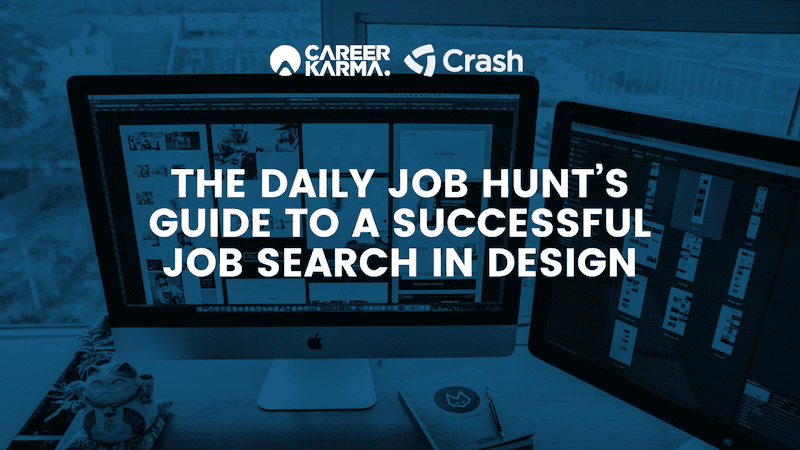No matter where you look, design is all around you. However, the vast majority of companies are unaware of the role design plays in launching successful products and campaigns. In fact, major market research firm Forrester reports that bad design can lead to the loss of millions of dollars. It cites Citibank as a prime example, having lost $500 million due to a user interface error.
Indeed, there’s more to design than simply how a product is packaged. Rather, it is the art of putting form and content together in the most effective way. Recognizing this, businesses have started to put more emphasis on design by hiring talented and skilled designers.
This has led to positive job projections for the design industry. According to the US Bureau of Labor Statistics, digital interface design is expected to experience significant growth, with employment rising by 574,500 jobs to 2.8 million by 2029. But to be part of this emerging field, you’ll need more than technical expertise.
If you want to know how to secure your spot in the industry, daily career email The Daily Job Hunt can teach you how to succeed in your job hunt, showcase your skills, and pitch your ideas effectively. With over 75,000 subscribers worldwide, it’s a valuable tool to help you thrive in the design industry.
The Daily Job Hunt daily career email helps job-seeking designers become more proactive and creative in their job search.
Subscribe to The Daily Job Hunt today.Essential Skills for Designers
According to the Daily Job Hunt (TDJH), successful designers should create beautiful products and notice, build, and rethink how things can and should be presented. Here is TDJH’s list of the most essential skills a designer must possess:
- Attention to detail
- Desire to innovate and craft new solutions
- Accountability and keeping up with deadlines
- Good communication skills
- Working well as part of a team
- Eager to learn
- Open to feedback
With this skillset, you’ll have a better chance of succeeding in one of the numerous career paths that the design industry has to offer. You can choose to specialize in a sector that interests you, such as graphic design, physical product design, digital product design (UX/UI design), web design, or any other kind of design.
How to Hack Your Job Search as a Designer with The Daily Job Hunt
If you’re just about to jumpstart your job search in the world of design, you’ll need more than an impressive set of technical and soft skills to get the attention of prospective employers. To know more about how you should design (pun intended) your job search, we asked Jérémy Chevallier, a career coach and a contributing writer for Crash, to share some valuable tips that helped him get his first design job despite not having any industry experience.
Live and Breathe Your Craft
Your job search shouldn’t prevent you from learning and growing your skills. While applying for design jobs, Jérémy advises that you work on your design skills every day: “If you get stuck in the trap of job applications and spend no time being a designer, you’ll lose motivation and conviction about design as a career path.” He recommends taking the initiative to design rather than waiting for permission to do projects.
Constantly practicing your skills, whether through volunteer works, internships, or freelancing projects, exposes you to different challenges and allows you to try out new techniques. This is a handy experience when proving to employers that you can adapt to and handle a wide range of projects in the workplace.
Showcase Your Portfolio
For job-seeking designers, the phrase ‘show, don’t tell’ rings louder compared to non-creative professionals. No matter how good your resume reads, you won’t get the job if you don’t have a portfolio that will give prospective employers a full and clear picture of your design skills. A portfolio exposes your work, demonstrates your creativity, and represents your capabilities as a designer.
As Jérémy puts it, “When you’re hunting for a design job, you’d better have at least a couple of projects showcasing your abilities. If not, nobody will look at you. A portfolio is table stakes.”
Start Your Job Hunt Within Your Network
Sending cold emails to employers is one way to apply for a job. But a more effective approach is networking. According to a recent LinkedIn survey, networking is used to fill 85 percent of all jobs. Design roles are not an exception. Putting some time into building your professional network can be more rewarding and garner more responses than randomly applying for job openings online.
Jérémy suggests starting your job hunt with a list of people you know that own businesses or are managers in design agencies: “Ask them if they could use help with any design work or if they know anyone. Be willing to do a little for free or for cheap to get the ball rolling and build trust working together.”
Email the Hiring Manager Directly
Once you have a list of companies to apply for, it’s time to connect with the hiring team. For this, The Daily Job Hunt recommends doing some research to find the hiring manager’s contact information. You can then create a video pitch of yourself and send it along with your portfolio directly to the hiring manager’s inbox.
Jérémy emphasizes, “As long as you genuinely seek to connect with these people, learn from them and contribute your own thoughts or opinions, you will experience a world of difference.”

How to Grow and Upskill as a Designer
Whether you’re looking for a job or have already found one, you’ll need to constantly expand your design expertise to remain relevant in the design field. Luckily, there are multiple avenues for you to improve your design skills.
Online Resources for Designers
First up is the Internet. Aside from online courses and design bootcamps, the digital realm has an abundance of design resources you can use to stay on top of the latest trends. The Daily Job Hunt recommends the following:
- AIGA Eye on Design. An editorial platform that puts the spotlight on works of emerging designers, best practices, and essential conversations in the design industry
- The Futur. An educational platform with content, courses, and tools to help you upskill in design and build a creative business
- Growth Design. A community of 80,000+ designers where subscribers get access to case studies and other content that helps designers and product leaders build better experiences for their customers
- UI Breakfast. A podcast about UI/UX design, products, and marketing
- Little Big Details 2.0. A weekly newsletter with 250,000+ subscribers launched by Jérémy Chevallier to share his experience in product design and user experience
- UX Collective. An independent design blog sharing stories on UX, visual, and product design to help designers think more critically about their work
- Moving Brands. An independent, global creative and innovation partner offering brands a multi-sensorial brand identity system
Must-Read Books for Designers
Reading various books on design will help you fill in any knowledge gaps regarding design theory. Below are some recommendations from The Daily Job Hunt to add to your design library.
- Paul Rand’s Thoughts on Design and A Designer’s Art
- Ellen Lupton’s Thinking with Type: A Critical Guide for Designers, Writers, Editors, & Students
- Adrian Shaughnessy’s How to Be a Graphic Designer Without Losing Your Soul
- Alina Wheeler’s Designing Brand Identity: An Essential Guide for the Whole Branding Team
- Steve Krug’s Don’t Make Me Think: A Common Sense Approach to Web Usability
- Sophie Walker’s The Japanese Garden
Design Leaders to Inspire Your Success
If you want to be a great designer, learn from and study the Greats. The Daily Job Hunt suggests following and connecting with outstanding designers on LinkedIn to get inspiration and professional advice. They include:
- Mirko Santangelo
- Michel Janda
- Chris Do
- Dain Walker
- Ales Nesetril
- Jony Ive
- Matthew Halliday
- Kalypso Kichu
Break into the Design Industry with The Daily Job Hunt
To recap, you’ll need to enhance your design skills every day, showcase your portfolio, prepare your elevator pitch, build your professional network, and reach out to hiring managers yourself to increase your chances of getting a job interview and eventually landing your first design job.
Want to learn more on how to break into the design industry? Subscribe to The Daily Job Hunt daily email today.
About us: Career Karma is a platform designed to help job seekers find, research, and connect with job training programs to advance their careers. Learn about the CK publication.




